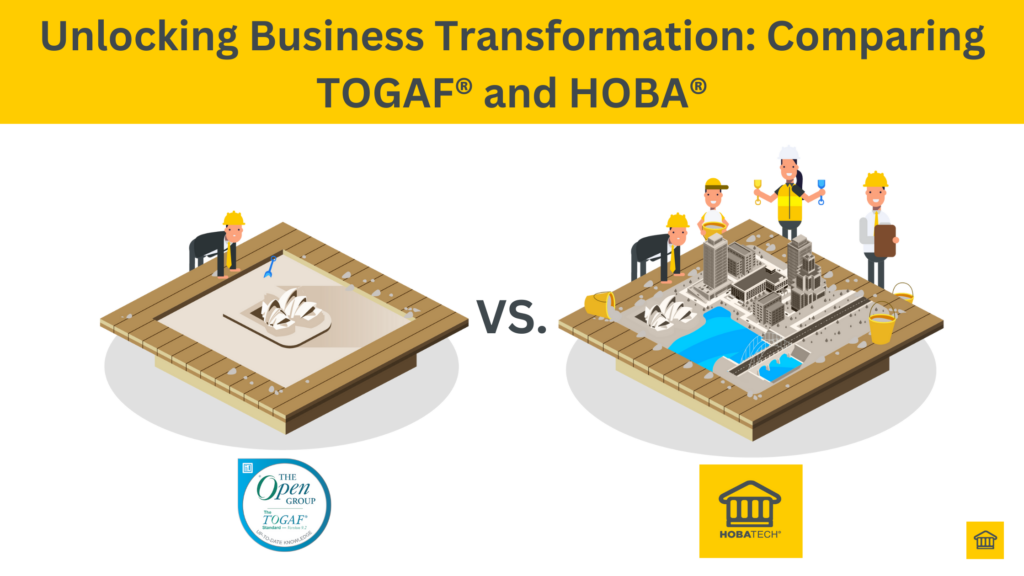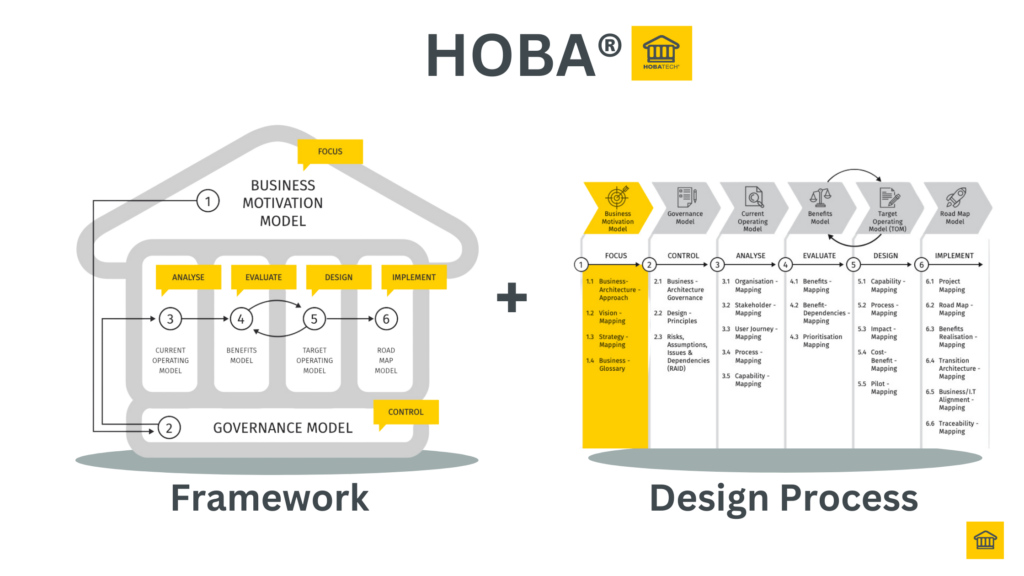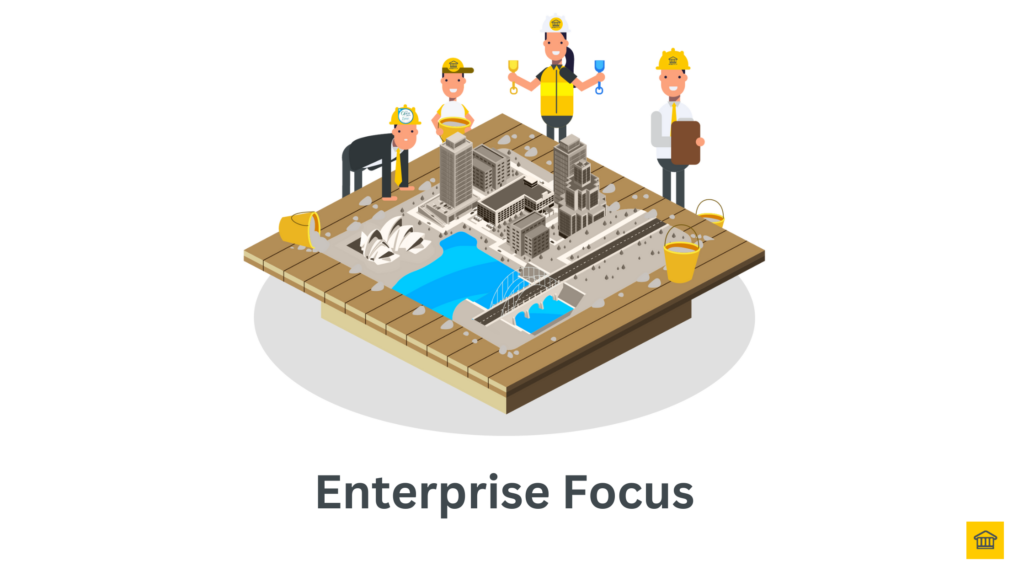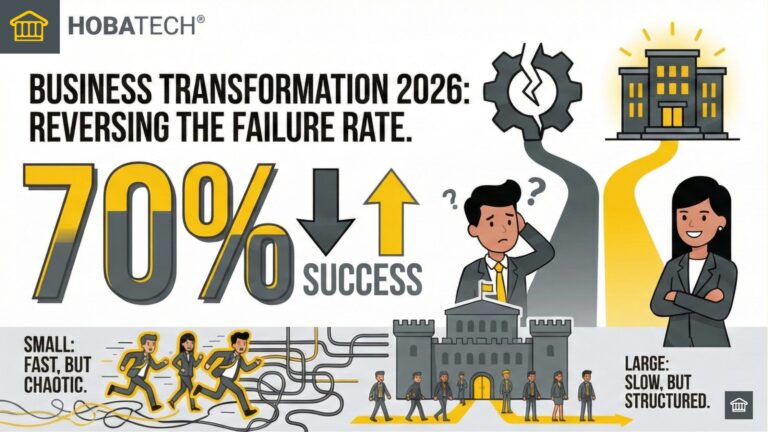Welcome to our comprehensive blog post where we delve into a detailed comparison between HOBA and TOGAF, two leading enterprise architecture frameworks.
We aim to provide you with a clear understanding of the strengths and limitations of each framework, and how they guide organizations through business transformation and enterprise architecture.
In this blog post, we discuss how HOBA places business alignment at the forefront, ensuring that every architectural decision is driven by its potential impact on key performance indicators and strategic objectives.
We also explore how HOBA takes a holistic approach to enterprise architecture, integrating business strategy, processes, technology, and human capital.
On the other hand, we delve into TOGAF’s focus on IT architecture and technology infrastructure, and its key components, including the Architecture Development Method (ADM).
We also discuss the criticisms of TOGAF, primarily its focus on technology and its lack of attention to other important aspects of the organisation such as people and processes.
We highlight HOBA’s advantages, emphasising its ability to get the whole team on board and mobilise digital business transformation quickly and easily.
We also mention how HOBA is aligned with other approaches including TOGAF, Project Management (Waterfall), Agile Scrum, SAFe (Scaled Agile Framework), APQC (American Productivity and Quality Centre) Process Classification Framework (PCF), and Benefits Realisation Management (BRM).
Heres what we’ll cover (click the links to skip to the section below):
NB – Click to expand images 📸
Table of Contents
HOBA® vs TOGAF®
Enterprise architecture frameworks play a crucial role in guiding organisations through the complex process of aligning business strategies with IT infrastructure.
Among the myriad of frameworks available, two prominent methodologies stand out: HOBA® (House of Business Architecture®) and TOGAF® (The Open Group Architecture Framework).
In this article, we’ll delve into the differences between HOBA® and TOGAF®, examining their methodologies, scope, flexibility, and alignment with business objectives.
Introduction
Enterprise architecture frameworks provide a structured approach to organising and managing an organisation’s IT infrastructure.
They offer methodologies, guidelines, and best practices for designing, implementing, and maintaining enterprise-wide systems.
HOBA® and TOGAF® are two such frameworks that have gained traction in the industry for their effectiveness in addressing complex architectural challenges.
Understanding TOGAF®
Definition and Purpose of TOGAF®
TOGAF®, developed by The Open Group, is a comprehensive framework designed to facilitate the development of enterprise architectures that are consistent, standardised, and aligned with business goals. It provides a structured approach for organizations to design, implement, and manage their IT architectures.
Key Components and Phases of TOGAF® Methodology
TOGAF® comprises several key components, including the Architecture Development Method (ADM), which outlines the process for creating and managing enterprise architectures.
The framework consists of various phases, such as Architecture Vision, Business Architecture, Information Systems Architecture, Technology Architecture, and Opportunities and Solutions.
Exploring HOBA®
Introduction to HOBA® (House of Business Architecture®)
HOBA® is a holistic framework that goes beyond traditional enterprise architecture approaches by integrating business strategy, processes, technology, and human capital.
It provides a structured methodology for aligning business objectives with IT capabilities, driving holistic transformation across the organization.

6-Steps to Business Transformation Success
WHAT THE TOP 30% OF ORGANISATIONS KNOW THAT YOU DON’T 👉
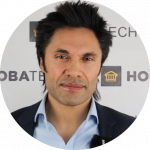
👍 When comparing TOGAF and HOBA, it's clear: TOGAF may have its merits, but HOBA steals the show. It's not just about architecture; it's about transformation. #HOBAWins #BusinessTransformation" 💼🌟
Heath Gascoigne Tweet
Core Principles and Components of HOBA® Framework
The HOBA® framework is based on the principles of agility, adaptability, and business-centricity. It consists of several components, including Business Architecture, Information Architecture, Technology Architecture, and Human Architecture. HOBA® emphasizes the importance of aligning these components to achieve strategic business objectives.
Key Differences:
1. Scope and Focus
- TOGAF® predominantly concentrates on IT architecture and technology infrastructure.
- HOBA® adopts a broader perspective, integrating business strategy, processes, and technology to drive holistic transformation.
2. Methodology
- TOGAF® follows a phased approach, guiding organisations through discrete stages of architecture development.
- HOBA® emphasizes iterative and adaptive methodologies, allowing for greater flexibility and responsiveness to changing business requirements.
3. Business Alignment:
- While TOGAF® acknowledges the importance of aligning IT with business goals, its primary focus remains on technical architecture.
- HOBA® places business alignment at the forefront, ensuring that architectural decisions directly contribute to the achievement of strategic objectives and desired business outcomes.
4. Complexity and Scalability:
- TOGAF®'s extensive framework can be complex to implement, especially for smaller organisations or those with limited resources.
- HOBA® offers a more streamlined and adaptable approach, making it suitable for organisations of all sizes and industries.
Why HOBA® Excels in Business Transformation:
1. Business-Centric Approach:
- HOBA®'s emphasis on aligning architecture with business objectives ensures that every transformational initiative directly contributes to organisational success.
2. Agility and Adaptability:
- HOBA®'s iterative methodology enables organizations to respond rapidly to market changes, technological advancements, and shifting customer demands.
3. Enhanced Collaboration:
- By bridging the gap between business and IT stakeholders, HOBA® fosters greater collaboration and synergy, facilitating smoother implementation and adoption of transformational initiatives.
4. Focus on Outcomes:
- HOBA®'s relentless focus on business outcomes ensures that every architectural decision is driven by its potential impact on key performance indicators and strategic goals.
5. Simplicity and Efficiency:
- HOBA®'s streamlined approach reduces complexity and eliminates unnecessary overheads, allowing organizations to achieve transformational objectives more efficiently and cost-effectively.
Comparison: Methodology
Contrasting Approaches of TOGAF® and HOBA®
TOGAF® follows a phased approach, guiding organisations through discrete stages of architecture development.
In contrast, HOBA® adopts a more iterative and adaptive methodology, allowing for greater flexibility and responsiveness to changing business requirements.
Highlighting Differences in Methodology and Implementation
TOGAF®‘s methodology is highly structured and prescriptive, providing detailed guidelines for each phase of architecture development.
On the other hand, HOBA®‘s methodology is more flexible and adaptable, allowing organisations to tailor their approach to suit their unique needs and challenges.
Scope and Focus
Examining the Scope and Focus of TOGAF® and HOBA®
TOGAF® primarily focuses on IT architecture and technology infrastructure.
In contrast, HOBA® takes a broader perspective, integrating business strategy, processes, and technology to drive holistic transformation.
How Each Framework Addresses Business and IT Alignment
While both TOGAF® and HOBA® recognize the importance of aligning IT with business goals, HOBA® places a stronger emphasis on business alignment, ensuring that architectural decisions directly contribute to the achievement of strategic objectives.
Business Alignment
Importance of Business Alignment in Enterprise Architecture
Business alignment is critical for ensuring that architectural decisions support and enhance overall business objectives. It involves understanding the organization’s strategic goals, identifying the necessary IT capabilities, and aligning them to drive business value.
How TOGAF® and HOBA® Prioritize Business Objectives
While TOGAF® acknowledges the importance of business alignment, its primary focus remains on technical architecture. HOBA®, on the other hand, places business alignment at the forefront, ensuring that every architectural decision is driven by its potential impact on key performance indicators and strategic objectives.
Flexibility and Adaptability
Evaluating the Flexibility and Adaptability of TOGAF® and HOBA®
In today’s rapidly changing business environment, organizations need frameworks that can adapt quickly to evolving requirements and market dynamics. HOBA®‘s iterative approach allows organizations to respond rapidly to changes, seize opportunities, and stay ahead of the competition.
Which Framework Offers More Agility in Responding to Changing Business Needs
While TOGAF® provides a structured methodology for architecture development, its rigid framework may limit organizations’ ability to respond quickly to changes. HOBA®, with its emphasis on agility and adaptability, offers a more flexible approach that enables organizations to innovate and iterate more effectively.
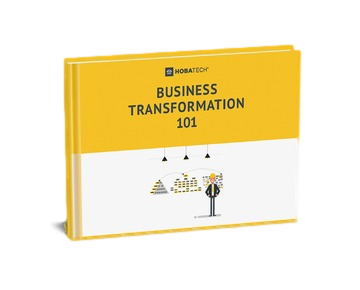
👏 "📘 Our playbook is your guide to successful business transformation. Easy to read, follow, and implement, HOBA provides real insights and practical tips for your journey. #HOBA #PracticalImplementation #BusinessInsights 🧭📈"
Heath Gascoigne Tweet
Case Studies
Case Study 1: HOBA in the Transport Industry
Company A: How HOBA Revolutionized their Operations in the Transport Industry
Our Client, Company A, a leading transport company, embarked on a HOBA agile business transformation journey to revamp its operations and enhance customer experience.
Through the adoption of agile methodologies and the implementation of advanced technologies, Company A was able to streamline its operations, optimise logistics management, and deliver enhanced services to its customers.
This transformation empowered Company A to adapt to the evolving landscape of the transport industry and achieve substantial improvements in its overall business operations.
Case Study 2: HOBA in the Oil and Gas Industry
Company B: How HOBA Transformed their Operations in the Oil and Gas Industry
Our Client, Company B, a prominent player in the oil and gas industry, undertook a transformative journey with HOBA’s agile business methodology to modernise its operations and enhance overall efficiency.
By embracing agile methodologies and leveraging advanced technologies, Company B successfully streamlined its supply chain, optimised inventory management, and improved operational processes.
This transformation enabled Company B to adapt to the dynamic demands of the oil and gas industry and achieve significant improvements in its overall business operations.
These case studies demonstrate how HOBA’s holistic business-led methodology was successfully utilised in the oil and gas industry and the transport industry to drive transformative changes and achieve significant operational improvements.
If you need further information or details on these case studies, feel free to ask!
Looking for the Best Training to deliver your Business Transformation? Search no more!
- 30-Day Money-Back Guarantee
- Risk FREE

👏 TOGAF vs. HOBA? My verdict: HOBA all the way. It's not just a framework; it's a game-changer. Embrace the future of business transformation with HOBA. #HOBAForTheWin #EmbraceChange" 🚀💡
Heath Gascoigne Tweet
Conclusion
While TOGAF® remains a formidable framework for enterprise architecture, HOBA® offers a compelling alternative, particularly for businesses seeking to embark on transformative journeys. By prioritizing business alignment, agility, collaboration, and outcomes, HOBA® provides a roadmap for sustainable and impactful business transformation. As organizations navigate an increasingly complex and dynamic business landscape, embracing a holistic and business-oriented approach like HOBA® can pave the way for long-term success and competitiveness.
In conclusion, while both TOGAF® and HOBA® offer valuable methodologies for enterprise architecture, they differ in their approach, scope, and flexibility. While TOGAF® provides a structured framework for architecture development, HOBA® offers a more holistic and adaptable approach that aligns business and IT more effectively. Ultimately, the choice between TOGAF® and HOBA® will depend on the organization’s specific needs, goals, and culture.
FAQs
HOBA® takes a holistic approach to enterprise architecture, integrating business strategy, processes, technology, and human capital, whereas TOGAF® primarily focuses on IT architecture and technology infrastructure.
Both HOBA® and TOGAF® can be implemented in large enterprises. However, HOBA®‘s flexibility and adaptability make it particularly well-suited for organizations with complex and dynamic business environments.
While HOBA® and TOGAF® have different methodologies and approaches, they can complement each other in certain scenarios. Organizations may choose to leverage aspects of both frameworks to address their unique architectural challenges.
HOBA® and TOGAF® both provide guidelines and best practices for designing scalable architectures. However, HOBA®‘s emphasis on agility and adaptability may make it better suited for scaling IT capabilities in response to changing business needs.
Several organizations across various industries have successfully implemented both HOBA® and TOGAF®. Examples include large enterprises in the finance, healthcare, and technology sectors, which have leveraged these frameworks to drive business transformation and innovation.
Still got questions?
Explore the Agile Transformation Accelerator training program, HOBA® for Executives, Leading HOBA 1.0, HOBA Principles, and The Agile Business Transformation Framework to deepen your understanding and drive meaningful transformation in your organisation.
Ready to take the next step? Explore our plans and pricing here and embark on a transformative journey with HOBA today.
Together, let’s unlock the potential of your business and pave the way for a future of sustainable growth and innovation.
Thank you for reading this!
Sincerely,
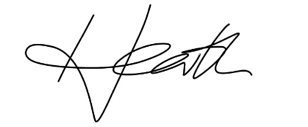
Heath Gascoigne
P.S. If you want to join our Business Transformator community of 2,000+ like-minded Business Transformators, join the community on the Business Transformator Facebook Group here.
P.P.S. If you want to learn more about business transformation, check out The Business Transformation Playbook here.
For more information, visit https://www.hoba.tech

